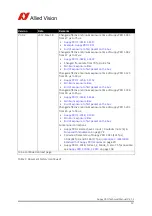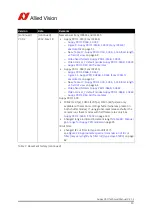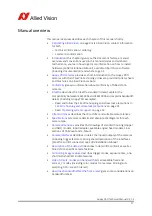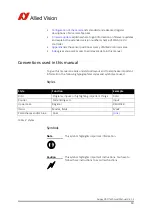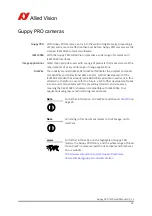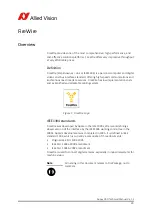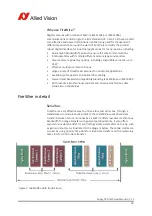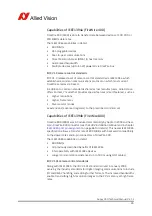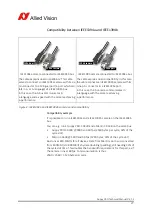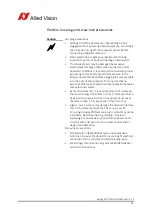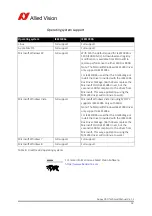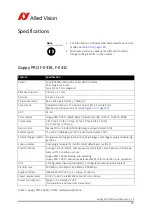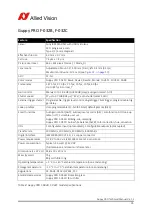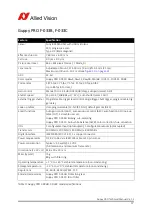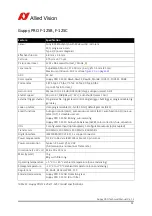
Guppy PRO Technical Manual
V4.1.2
26
Capabilities of IEEE1394a (FireWire 400)
FireWire 400 (S400) is able to transfer data between devices at 100, 200, or
400 MBit/s data rates.
The IEEE1394a capabilities in detail:
•
400 Mbit/s
•
Hot-pluggable devices
•
Peer-to-peer communications
•
Direct Memory Access (DMA) to host memory
•
Guaranteed bandwidth
•
Multiple devices (up to 45 W) powered via FireWire bus
IIDC V1.3 camera control standards
IIDC V1.3 released a set of camera control standards via IEEE1394a, which
established a common communications protocol on which most current
FireWire cameras are based.
In addition to common standards shared across manufacturers, Allied Vision
offers Format_7 mode that provides special features (smart features), such as:
•
Higher resolutions
•
Higher frame rates
•
Diverse color modes
as extensions (advanced registers) to the prescribed common set.
Capabilities of IEEE1394b (FireWire 800)
FireWire 800 (S800) was introduced commercially by Apple in 2003 and has a
9-pin FireWire 800 connector (see the
1394 Installation Manual
and in chapter
on page 66 for details). This newer IEEE1394b
specification allows a transfer rate of 800 MBit/s with backward compatibility
to the slower rates and 6-pin connectors of FireWire 400.
The IEEE1394b capabilities in detail:
•
800 Mbit/s
•
All previously described benefits of IEEE1394a
•
Interoperability with IEEE1394a devices
•
Longer communications distances (up to 500 m using GOF cables)
IIDC V1.31 camera control standards
Along with IEEE1394b, the IIDC V1.31 standard arrived in January 2004,
evolving the industry standards for digital imaging communications to include
I/O and RS232 handling, and adding further formats. The increased bandwidths
enable transmitting high-resolution images to the PC’s memory at high frame
rates.

